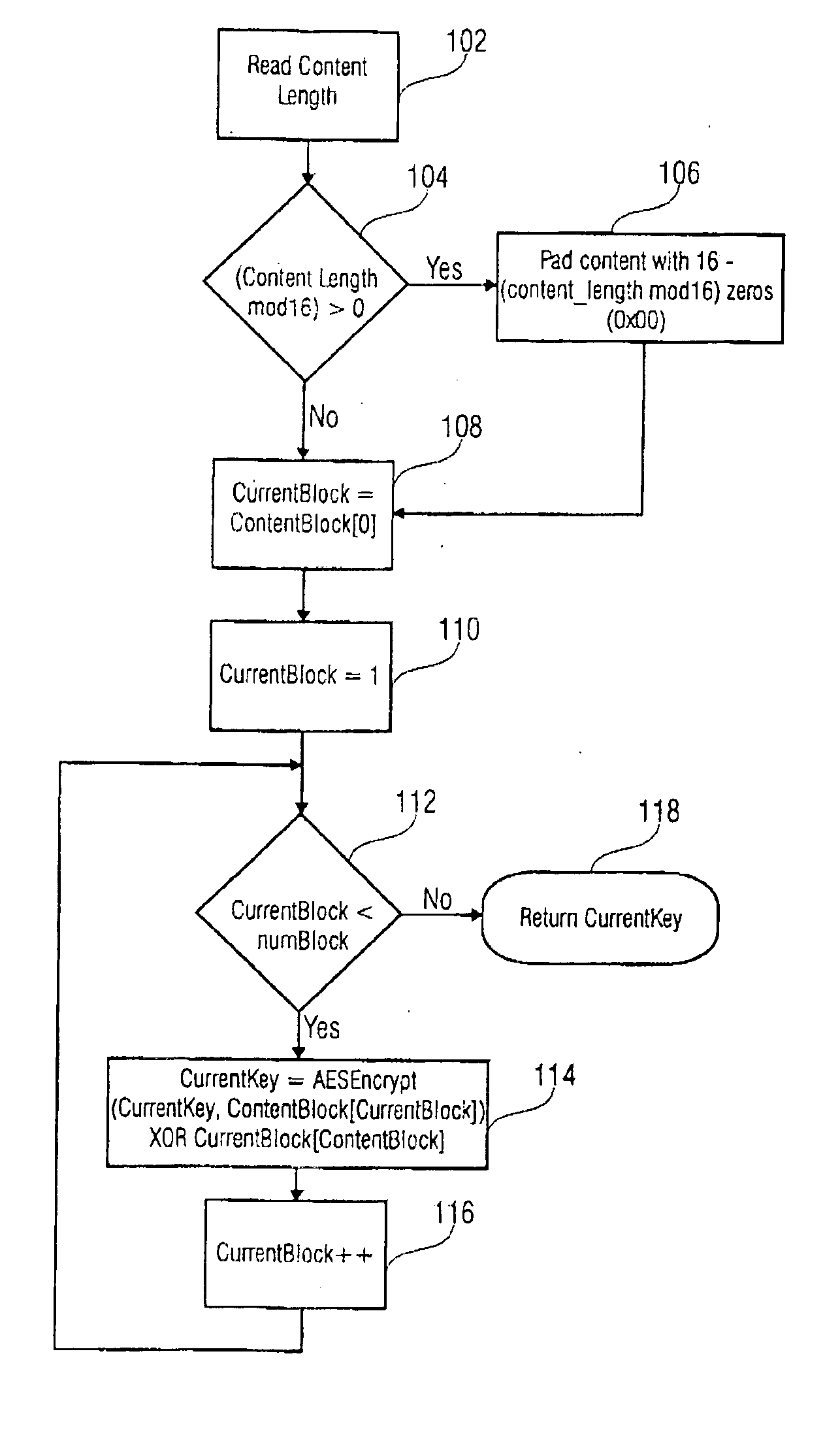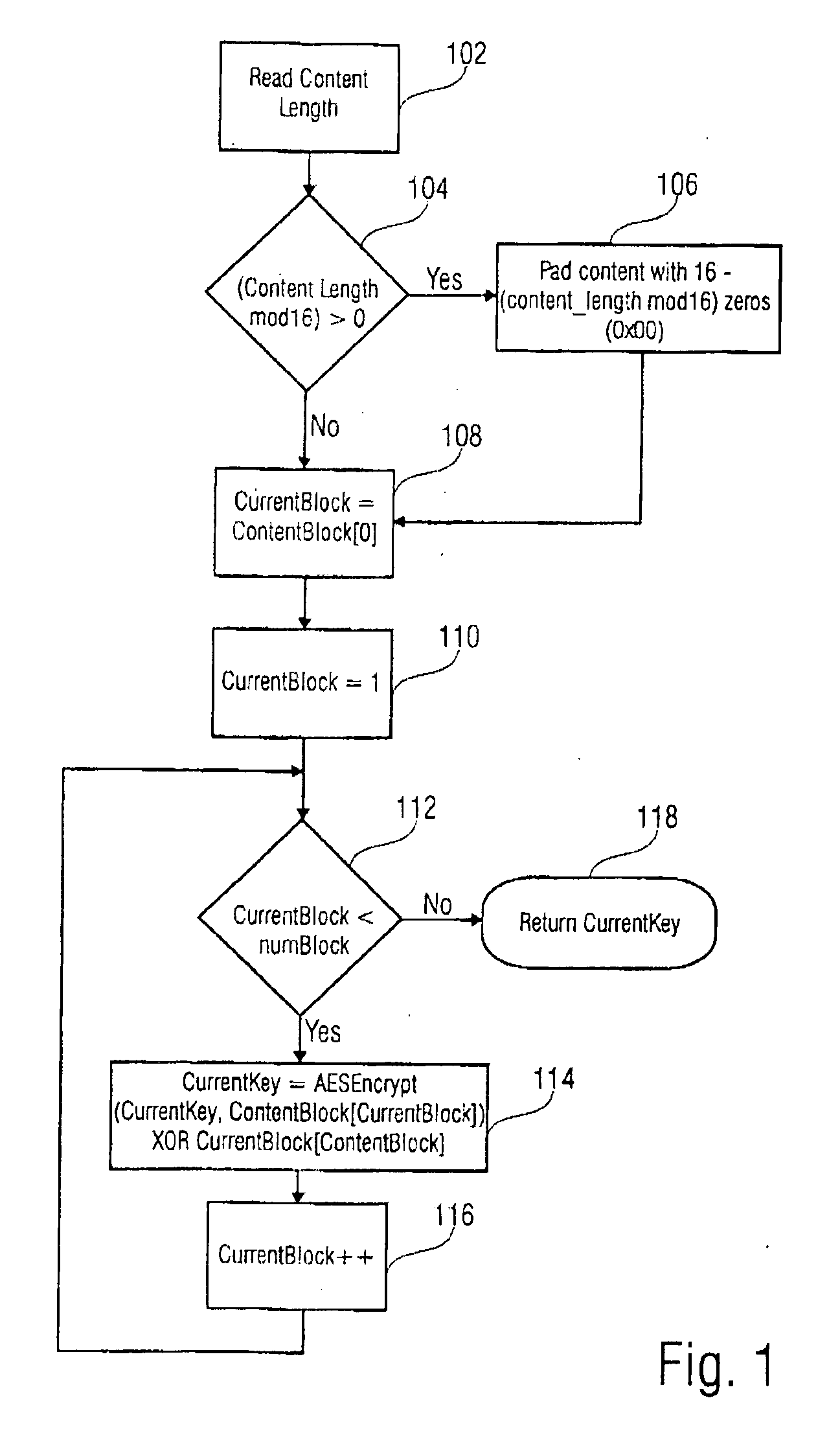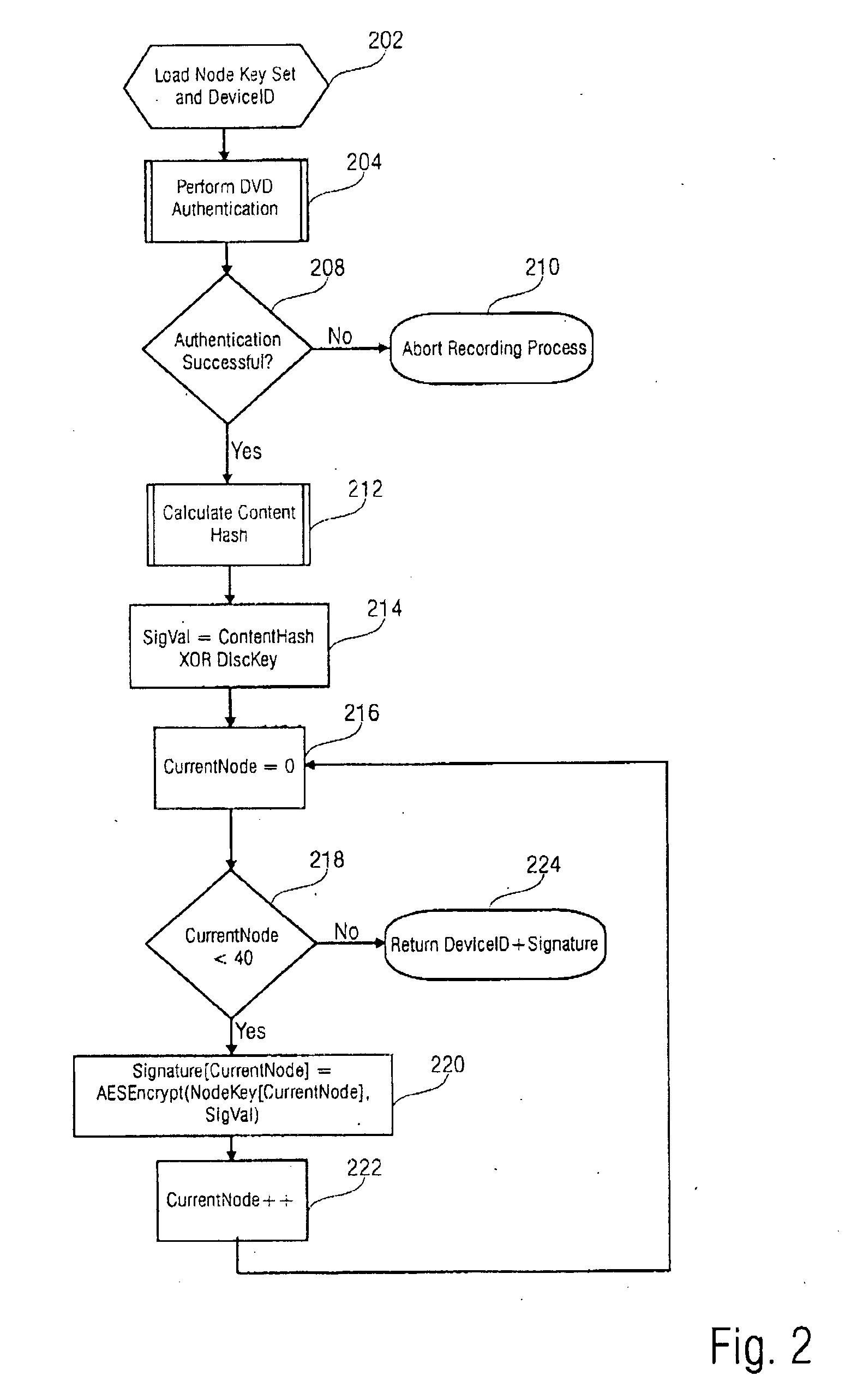Method for signing a data package and signing apparatus
a data package and data technology, applied in the field of digital rights management, can solve the problems of difficult deployment of digital signature creation and verification in consumer electronic devices with very limited computation power
- Summary
- Abstract
- Description
- Claims
- Application Information
AI Technical Summary
Benefits of technology
Problems solved by technology
Method used
Image
Examples
first embodiment
[0038] In FIG. 1 the a step of the inventive method is disclosed in a flow diagram. In this embodiment, in a first step 102 the content length is read. Following, if the content length is not an integer multiple of 16 (step 104) a zero-padding is accomplished in step 106. If the content length is an interger multiple of 16, (which is also true after the accomplishment of step 106), a variable CurrentKey is loaded with a segment of the data to be encrypted in step 108. Expressed in other words, the variable ContentKey is loaded with the first content block having an ordering index with value 0. As content the payload data, for example the digital data of a movie stored on a DVD-disc, can be used. Following, in step 110, a variable CurrentBlock is loaded with a value of 1. If the variable CurrentBlock is smaller than a code number of blocks, the payload data is divided into (step 112), the variable CurrentKey is a signed value which is a logical EXCLUSIVE-OR-combination of the content...
second embodiment
[0045]FIG. 2 discloses a flow chart of a method in accordance with a Herein, a signature block is created providing the authenticity of a DVD-video disc through its content and cryptographic disc key. In a first step 202 a node key and a device ID (signers identification code) are loaded. Following to step 202, a DVD authentication is performed in step 204. In a further step 208 it is determined whether the authentication was successful or not. In the case the authentication is not successful, the recording process is aborted (step 210). If the authentication is successful in step 208, a content hash value is calculated in step 212 which is performed according to the method as disclosed in FIG. 1 wherein the content hash is equal to the variable CurrentKey as returned in step 118 in FIG. 1. In a further step 214, a value for a variable SigVal is calculated by EXCLUSIVE-OR-combining the values of the content hash with the value of the variable (disc key). In a further step 216, a va...
third embodiment
[0047]FIG. 3 illustrates a step of the present invention in a flow diagram according to a Herein, the process or method of recovering the node key from a root key in the binary tree is illustrated. In a first step 302 a variable CurrentPos is assigned a value of 0 and the variable CurrentNode is assigned the value RootNode. Then, in a second step 304 it is determined whether the variable CurrentPos has the value being smaller than 40 and the value of the variable CurrentNode is not NULL. If this condition is true, in a following step 306 a variable BranchLeft is assigned a value which is determined by a right-shift of the value of the variable DeviceID by a number of bits according to the value of the variable CurrentPos being logically AND-combined with 1. If the condition checked in step 304 is not true, a signal is returned in step 308 indicating that the signature is revoked. Following the operation in step 306, it is determined whether the variable BranchLeft has the boolean v...
PUM
 Login to View More
Login to View More Abstract
Description
Claims
Application Information
 Login to View More
Login to View More - R&D
- Intellectual Property
- Life Sciences
- Materials
- Tech Scout
- Unparalleled Data Quality
- Higher Quality Content
- 60% Fewer Hallucinations
Browse by: Latest US Patents, China's latest patents, Technical Efficacy Thesaurus, Application Domain, Technology Topic, Popular Technical Reports.
© 2025 PatSnap. All rights reserved.Legal|Privacy policy|Modern Slavery Act Transparency Statement|Sitemap|About US| Contact US: help@patsnap.com



